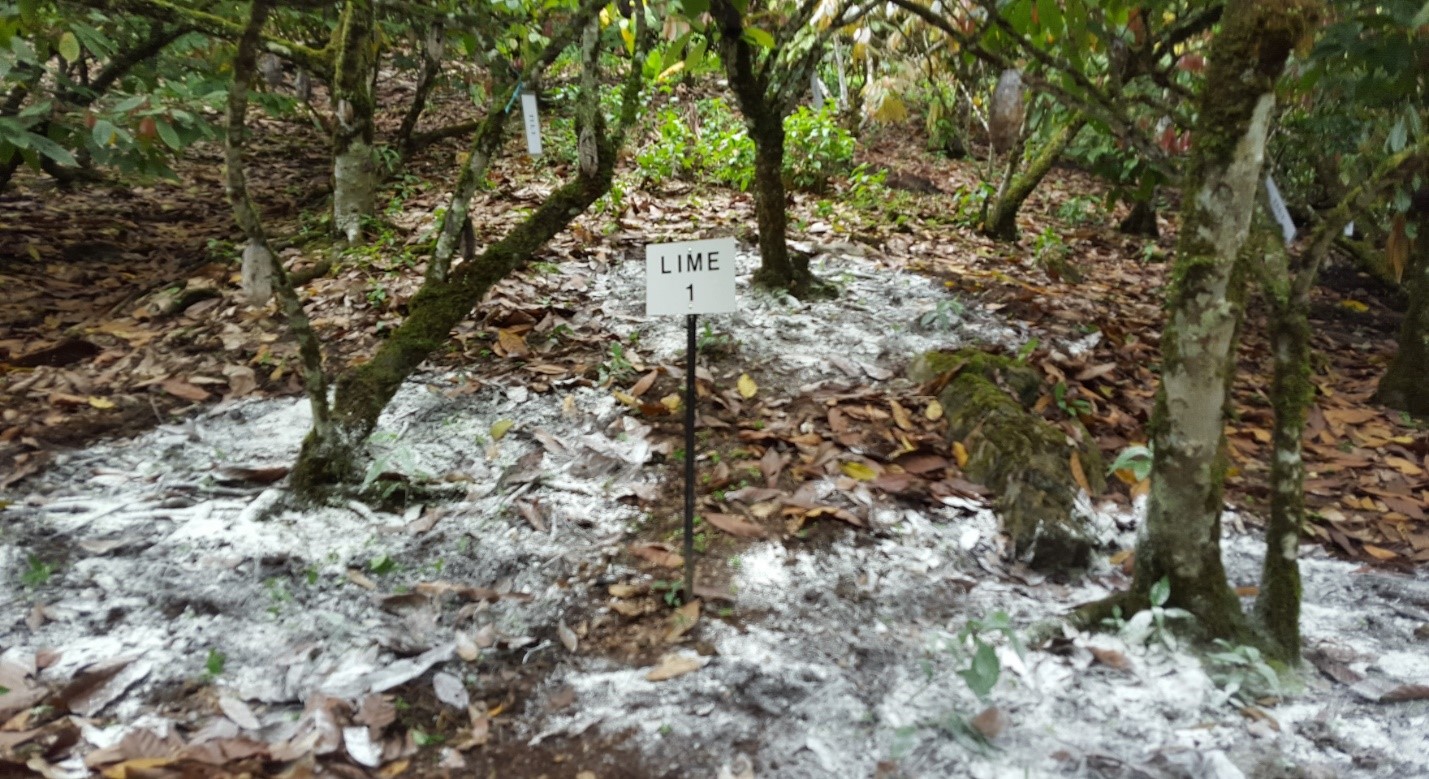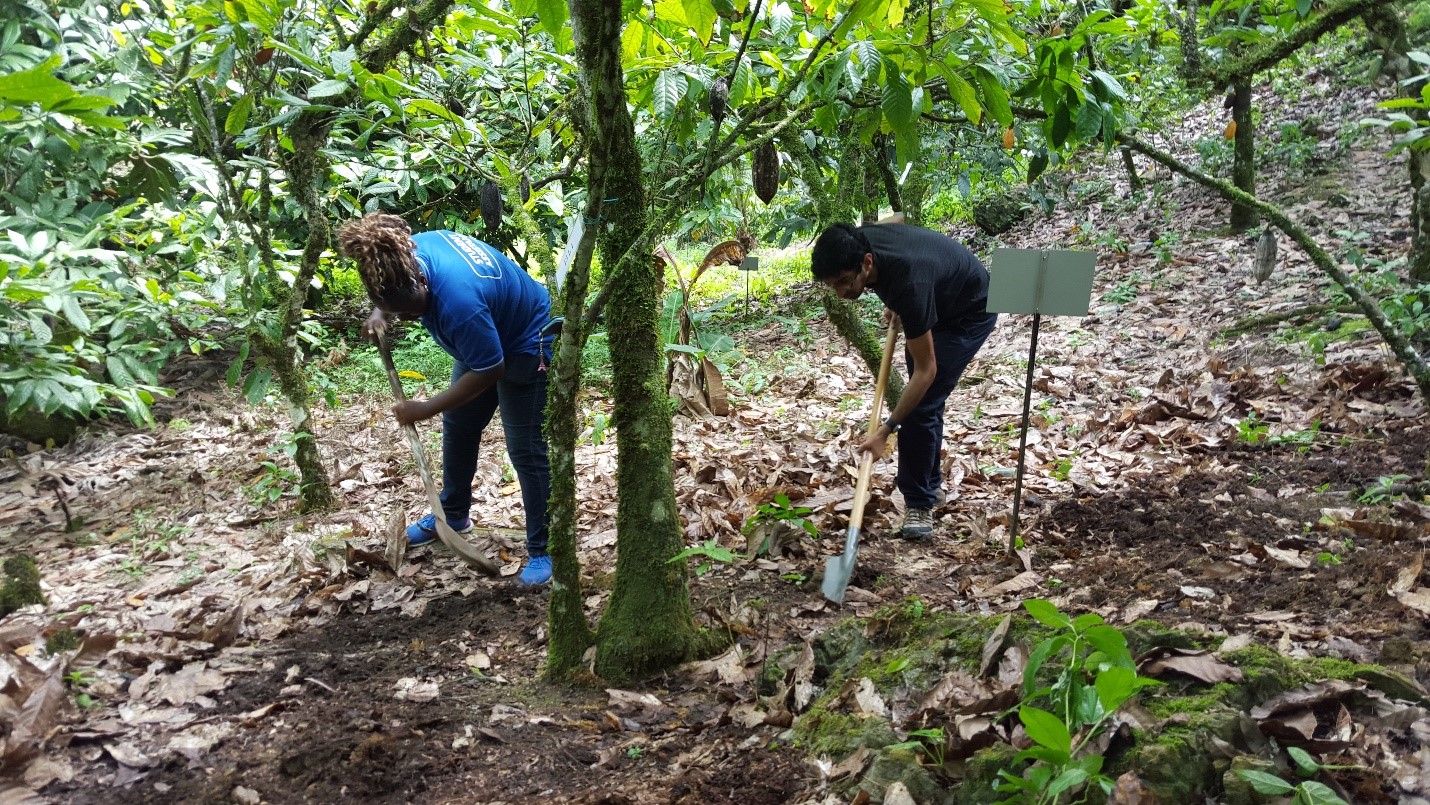Cadmium Mitigation
Cadmium and Cocoa
Cadmium (Cd) is a heavy metal used in batteries, industrial components, and paint. It is found as a natural element in volcanic soil, but can also enter into the soil by a number of human activities such as improper disposal of industrial wastes, and runoff of contaminated fertilizers, contaminated grains fed to livestock or manure derived from these livestock. In turn, certain plants store (bioaccumulate) the heavy metal in their organs, stem, leaves fruit and seed, through their natural processes. In high enough concentrations, cadmium eventually ends up in our diets as a toxicant. Cadmium can result in a number of deleterious effects such as kidney damage, fragile bones (bone demineralization), abdominal cramps, headaches, vomiting and diarrhea. In its airborne form, it can result in lung problems and predispose animals to lung cancer. Cocoa unfortunately, is a bioaccumulator of cadmium.
This bioaccumulation is of concern as cocoa is a perennial tree crop, and can therefore accumulate considerable amounts of cadmium, overtime. Furthermore, the levels of cadmium do not physically affect the plant, so the presence of the heavy metal cannot easily be detected by visual scoring. Within recent times, global food safety organizations have prioritised regulations regarding heavy metal concentrations in foods. The European Food Safety Authority for instance, has released standards for maximum permissible amounts of cadmium in cocoa and chocolate. In Trinidad and Tobago, high cadmium contamination is localized in certain area to the North East, where the soil is volcanic in nature. It has alo been localized where contaminated fertilizers or manure, flooding or dumping of industrial wastes has occurred. Cadmium will therefore not potentially affect the entire local cocoa industry.
To reduce contamination however, a number of innovations and strategies are to be developed and deployed by the government, private sector farmers as well as the university (CRC). Firstly, industry practices need to be addressed as regards the dumping of wastes, and the use of fertilisers and feeds, whose cadmium levels have not been evaluated. Another strategy, is to identify varieties of cocoa that do not absorb cadmium, or have highly reduced rates of adsorption. Other innovative solutions include modifying soil conditions thereby making the cadmium unavailable for uptake by plants, chelating the cadmium, or employing crops in the cocoa orchard to absorb cadmium from the soil.
Cadmium mitigation and remediation research at the Centre, is currently being spearheaded by Mr. Caleb Lewis (PhD student), and Dr. Gideon Ramtahal. On the left side of the spear, Lewis is focusing on the genetic variation of cadmium bioaccumulation in cocoa, which will be investigated in two phases. In the first phase of the work, cadmium content in cocoa varieties would be measured, and high bioaccumulators and low bioaccumlators of cadmium identified. A selection of high and low varieties would then be re-planted under a controlled hydroponic system, to determine if the observed patterns in the cadmium uptake are comparable to the field assessment. In the second phase of the research, a larger scale study of about 500 cocoa varieties at the genebank will be analyzed, to identify the genetic markers associated with cadmium uptake into the beans of cocoa.
The work of Dr. Ramtahal makes up the right side of the spear as he investigates mitigation of cadmium in cacao through soil and cultural strategies. Soil amelioration strategies include the effects of pH change, organic matter content, using other fertilizers containing transition metals, and using different soil amendment application techniques as shown in the pictures below. The effect of coppicing, heavy pruning and litter removal are some of the cultural mitigation strategies that are being explored.

Application of soil amendment around cacao trees to reduce cadmium uptake

Tilling soils around cacao trees for application of soil amendment to reduce cadmium uptake
Selected Publications
Lewis, Caleb, Adrian M. Lennon, Gaius Eudoxie, and Pathmanathan Umaharan. "Genetic variation in bioaccumulation and partitioning of cadmium in Theobroma cacao L." Science of The Total Environment 640 (2018): 696-703.
Ramtahal, Gideon, Ivan Chang Yen, Alisha Hamid, Isaac Bekele, Frances Bekele, Kamaldeo Maharaj, and Lisa Harrynanan. "The Effect of Liming on the Availability of Cadmium in Soils and Its Uptake in Cacao (Theobroma c acao L.) In Trinidad & Tobago." Communications in Soil Science and Plant Analysis 49, no. 19 (2018): 2456-2464.
Ramtahal, Gideon, Ivan Chang Yen, Isaac Bekele, Frances Bekele, Lawrence Wilson, Kamaldeo Maharaj, and Lisa Harrynanan. "Relationships between cadmium in tissues of cacao trees and soils in plantations of Trinidad and Tobago." Food and Nutrition Sciences 7, no. 01 (2016): 37.







